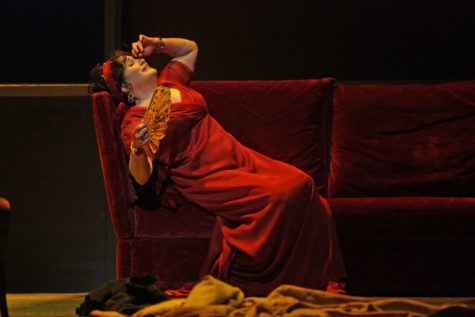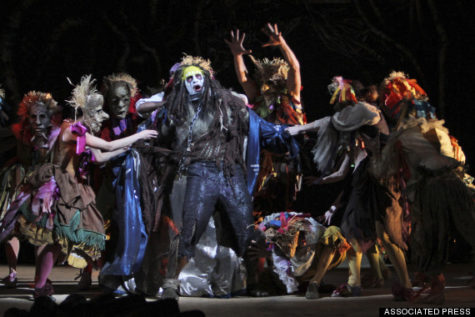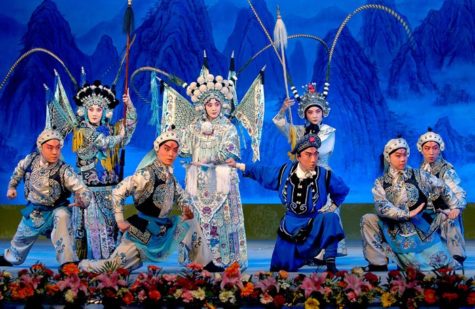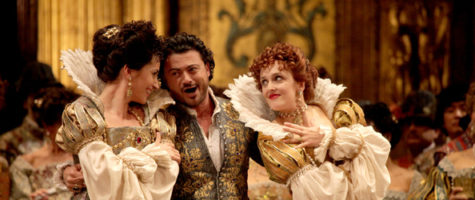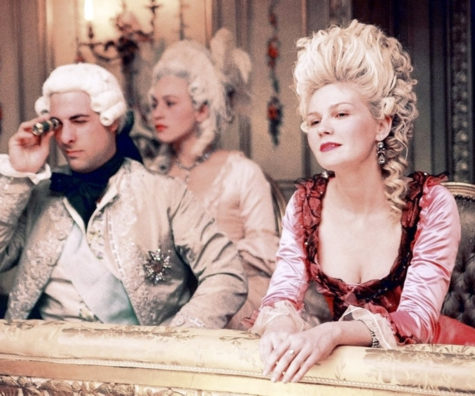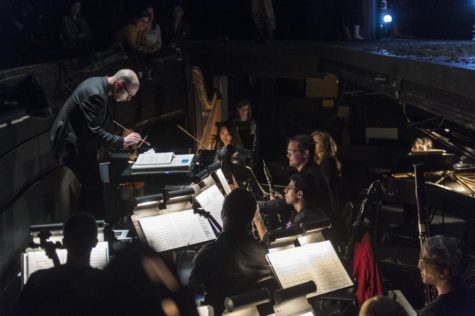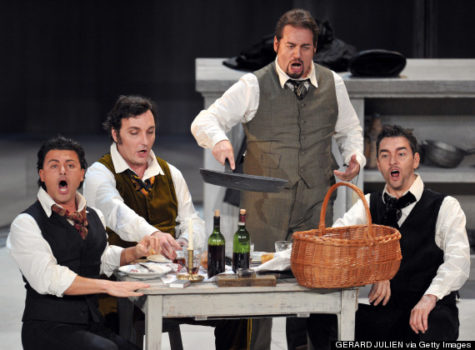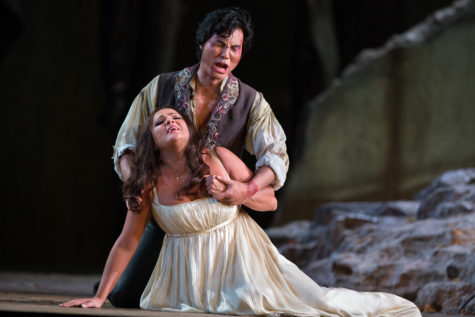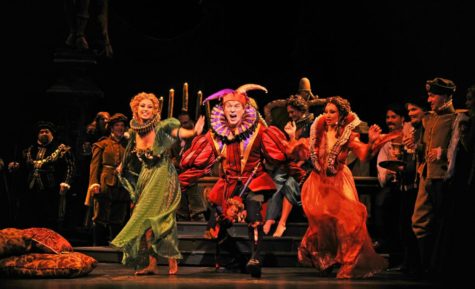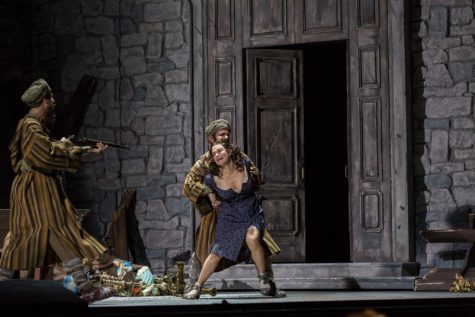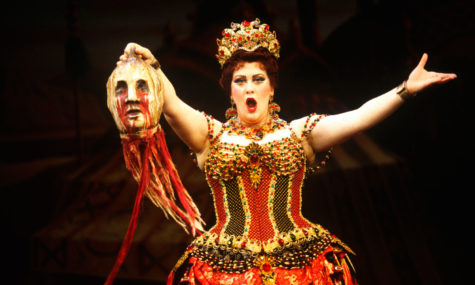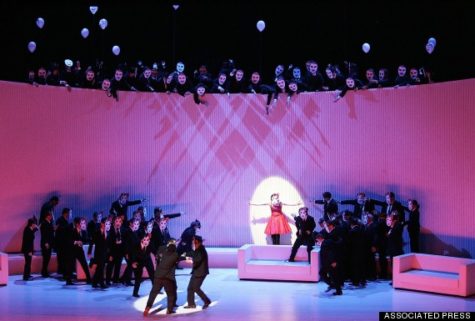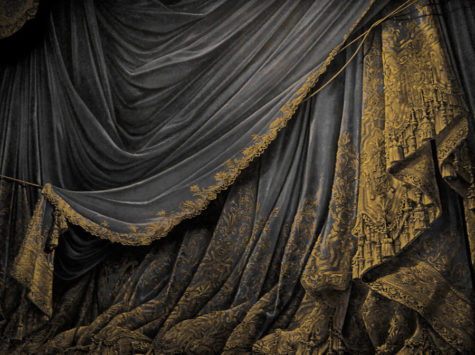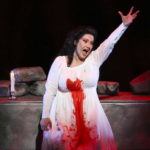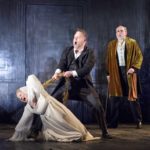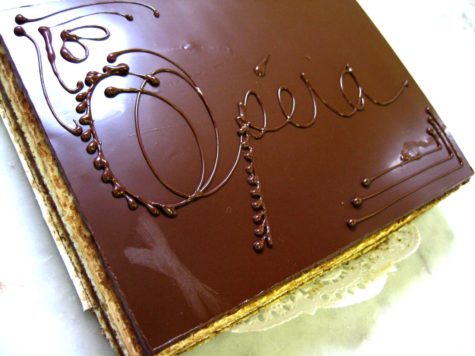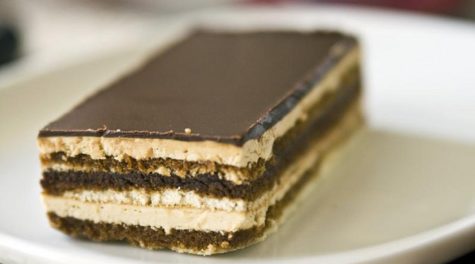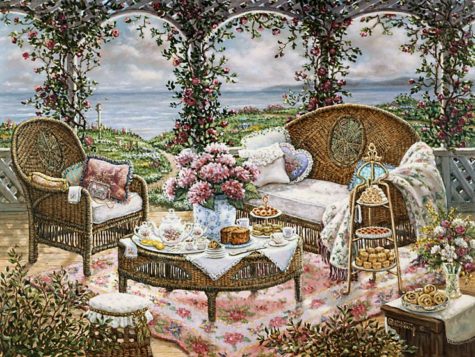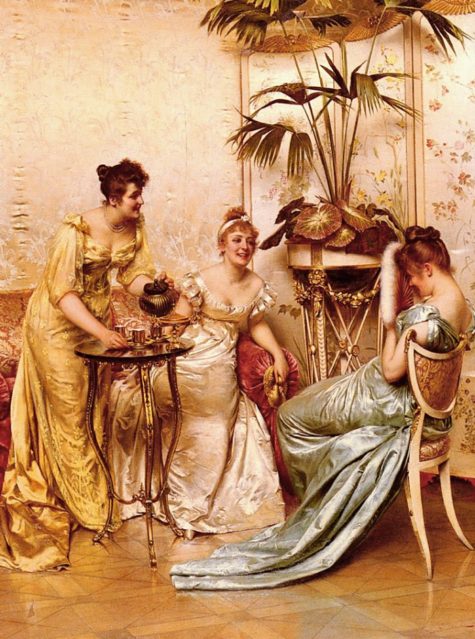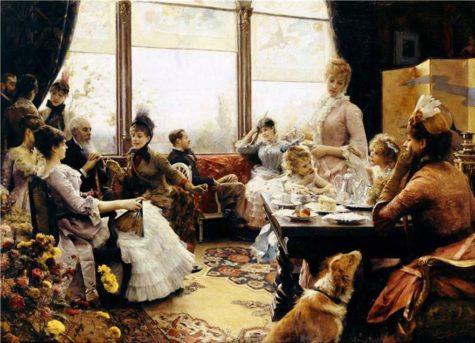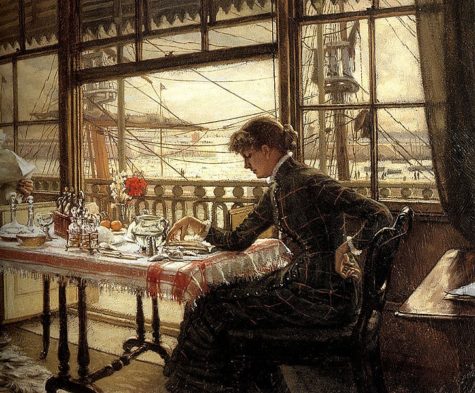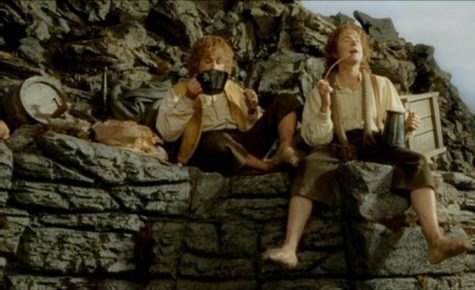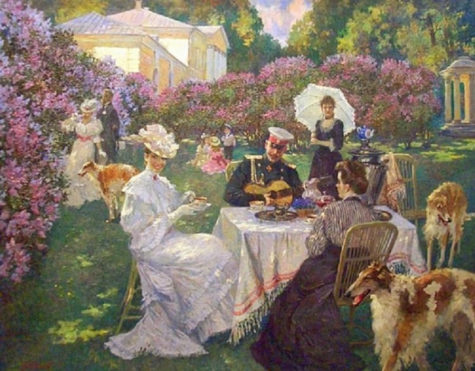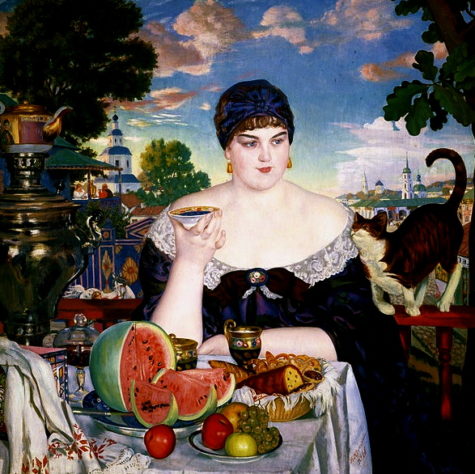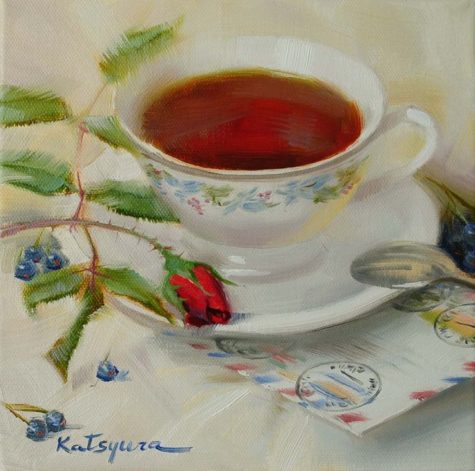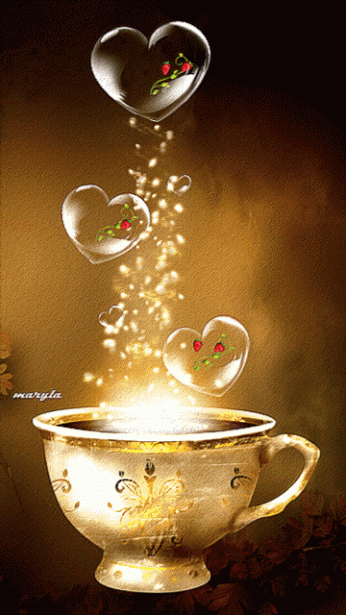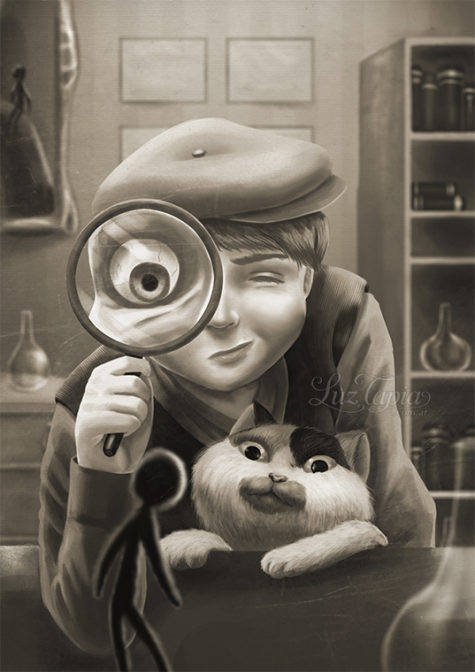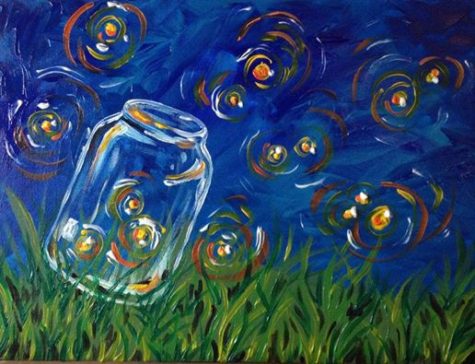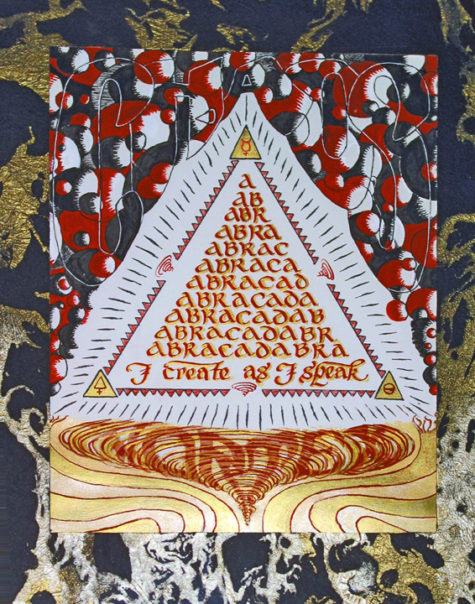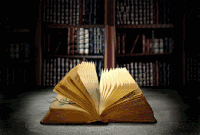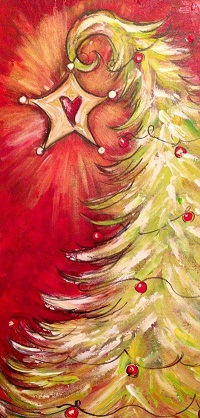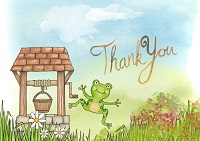Something Fun
Let’s Go To The Opera
They say it isn’t over until the fat lady sings. And since our project is winding down, I thought it might be a good idea to go to the opera. Never been? No worries. From Huffington Post we have this great guide.
Your Definitive Guide To Going To The Opera
Opera can be a little intimidating.
Luca Pisaroni in The Enchanted Island
But underneath the grandeur (and layers of makeup), are poignantly human stories to the tune of beautiful music. Because opera is not a mainstream form of entertainment, it is often regarded as a pretentious one, something untouchable. However, if you give it a fighting chance, you’ll find that opera can be enjoyed by classical musicians and complete newcomers alike — old to young. Here’s our guide to making that happen:
Warrior Woman of Yang – China National Peking Opera Company
Picking An Opera
When deciding on an opera to see, think about what type of movie you like (or, what Netflix would suggest for you). Rom-com fan? Try “Don Pasquale.” Psychodrama? “Lucia di Lammermoor.” Bawdy humor? “The Marriage of Figaro.” More into big explosions and theatrics? You’re probably better off with some Wagner. Then there’s always the classic ABCs of opera: “Aida,” “La Boheme” and “Carmen.”
If you want to see an opera live, you have to look into what’s being performed at your local house (or movie theater). Then do a little research — even just the first sentence on a show’s Wikipedia page will help — on an opera’s plot and genre. Don’t research too far — you don’t want to spoil the ending, do you?
Opera tickets can run expensive, but there are usually cheaper options to be found — think about it like a Broadway show or a football game. Aside from standing room and top tier seats, look out for rush tickets and programs for students or seniors, as well as special promotions from places like Gilt. Programs vary at different opera houses.
What To Wear
No, men, you do not have to wear a tux. And unless you ladies plan on going to an extravagant ball later — or you rabidly enjoy dressing up — there’s no reason to whip out a long gown.
For men, slacks (or, if you’re in a pinch, a nice pair of jeans) and a button-down shirt will do. Jacket and tie optional. Please don’t wear your dirty gym sneakers.
For women, dress pants or a skirt and blouse work, as does a cocktail or work dress. Heels if you feel like it.
If you’re into dressing up, have fun with it and use it as an excuse to get creative. If not, don’t worry about it. Just wear something generally presentable and you’ll be fine. Oh, and probably layer up, you never know what the temperature will be like inside.
Before The Curtain Opens
You’ll probably want to eat something before you get there — operas feel extra long when you’re hungry. Ditto for getting a coffee and using the restroom before you take your seats.
The ushers are there to help. Don’t be embarrassed asking them to direct you to your seats. The ushers will also hand you a playbill. The playbill has information about the singers and conductor, which is usually pretty interesting if only to see all the different countries from which everyone hails.
The playbill also includes the synopsis, broken into acts, as well as information on intermission(s). Reading the synopsis will help you understand what’s happening in the upcoming act, but if you’re the kind of person who doesn’t like plot spoilers, tread carefully.
Check about fifty times that your phone is on silent — or, better yet, off.
Curtains Open
After the lights dim, if the audience starts mysteriously applauding, it’s because the conductor is walking out to his or her stand. You should always applaud for the conductor: they’re the one running the show, after all.
The right times to applaud can get confusing, especially depending on what you’re seeing. The easiest approach is to wait for someone else to start clapping, and then join along. A brief silence after singing doesn’t always mean it’s applause time.
Yes, most operas are sung in languages that are not English, and even English is hard to understand in operatic form. No, you do not have to know Italian/German/French/etc. to understand what’s going on. All opera performances will have some form of subtitles for every line. Sometimes it’s a projection to the sides or above the stage, and in other places it’s a screen on the seat in front of you. If it is a screen, make sure you hit the appropriate button for your subtitles to show up.
Intermission
Depending on the length of the opera, there could be an intermission or two. During intermission, get out of your seat and stretch out some. Wander around the opera house. They tend to have art and old opera artifacts and portraits hanging around, which are neat to see.
Stop by the bar and get a drink or snack, if you’d like. And don’t be embarrassed if you feel the need for a coffee — it’s better to drink a coffee during intermission than fall asleep during the performance.
There will be some indication — flickering lights, chimes — that the show is going to start soon, so head back to your seat.
Oh, The Drama
Opera can inspire a lot of emotions. As Kasper Holten, director of opera at the Royal Opera House in London, said, “In one evening, you go through in two and one-half hours what the rest of us spend our whole emotional lives living through.” What you see on stage may not look like real life, but it’ll feel like it.
Verdi’s Il Trovatore – Metropolitan Opera.
Our best recommendation is that if you feel yourself getting swept away, flow with it. Operas can be hysterically funny (even by modern standards), devastating, devastatingly gorgeous (musically or visually), sexy, thrilling, tense, poignant and — it happens — boring. If you don’t enjoy one opera, that doesn’t mean you should completely write all opera off. That would be like saying you didn’t like one TV show, so now you’re never going to watch TV again.
But if you do get caught up in it all, go on ahead. Cry, laugh, gasp and shout — we can assure you that you won’t be the only one doing so.
Just don’t throw tomatoes; we don’t do that anymore.
When It’s All Sung And Done
If you enjoyed what you saw, keep the momentum moving. Most young opera “aficionados” know so much about the opera thanks to nothing fancier than the internet. Check out videos of a certain aria or a certain singer on YouTube, find the snarkiest review of a show that you can, and get lost in singer gossip.
Here’s a cool example of what can be found on YouTube:
“It’s Diana Damrau with her most famous rendition of the Queen of the Night’s “Der Hölle Rache”, in HD. All hail to the Queen! I always wonder if the people in that room were aware they had just witnessed perfection.”
If you have a friend who’s super into opera, they would love answering any question you have and talking all about the art form. And of course you can always pick up books on the subject.
What is Opera?
From Opera Europa we have this great informational article that explaines opera.
- Opera, the art of emotions
Opera is a total art form which joins music, singing, drama, poetry, plastic arts and sometimes dance. In each work, all the components of opera combine their expressiveness and their beauty.
This complex alchemy makes an opera performance an extraordinary show, monopolizing the sight, hearing, imagination and sensibility of the audience, where all human passions are at work.
- The libretto
The libretto is the ‘script’ of an opera. It can be an original creation, sometimes written by famous poets or novelists (as Hugo von Hofmannsthal and Stefan Zweig for Richard Strauss’s works), but often it is an adaptation of plays (Shakespeare was a great source of inspiration for librettists), tales or novels. The subjects developed in libretto are various: forbidden love, infidelity, revenge, craving for power, war, ancient myths or historic events…
With such subjects, opera inhabits a universe where human passions explode. Love, Tragedy and Death are often at the heart of the plot. The characters, sometimes torn between their feelings and their duty, are confronted with extraordinary situations and are carried away by heightened feelings.
This excess burns them, leading them to commit acts of violence and sometimes to death. Love at first sight, sacrifice, enchantment, courage, suicide and murder appear together in the libretto. Some characters are punished for their crimes, other find redemption or are stricken with remorse… and sometimes there is a happy ending!
- The singing
Unlike most theatre, the text is sung by the artists in operas. The emotion and the intensity of singing have an impact on the weight and the meaning words.
There are different voices classified in six principal categories, from the more high-pitched to the lower: soprano, mezzo-soprano, contralto for women; and tenor, baritone and bass for men. Moreover, voices are characterized according to their power and agility: they can be light, lyric or dramatic. A light voice is not very powerful but can easily reach the high notes and vocalizes, unlike a dramatic voice which is powerful but less agile.
Voices are generally associated with types of roles. They emphasize some aspects of the characters like their personality or their nature. In Bizet’s Carmen, Carmen is a wild seductress who has experience of the world: so she is played by a mezzo soprano with a dark and warm voice. Gilda in Verdi’s Rigoletto is a lyric soprano: her clear and high-pitched voice symbolizes her purity, innocence and naivety.
- The music
Music expresses in another way the emotions and the action taking place on stage. In the mind of the camerata fiorentina(see ‘History’ page), whose researches and studies on Ancient Greek theatre led to the creation of the operatic genre, the music was at the service of the libretto: ‘Prima le parole, dopo la musica’ (‘The words first, the music after’). But this conception is questionable. It is an old and continuing debate: according to the eras, libretto and music have alternately claimed primacy.
Actually music does not only serve the libretto and the singing: it completes and exalts them by highlighting the intensity of situations and the characters’ passions and feelings.
By playing with rhythms, tones, melodies, nuances, the composers exploit the extraordinary suggestive power of the music in order to create particular atmospheres that lyrics or staging can not create. Some authors use recurrent musical motifs to represent a character, an emotion or a concept. In the prelude to Das Rheingold, Wagner manages to relate the Rhine’s birth.
The opera begins with a unique triad which slowly emerges from silence and resonates in infinite depths: the Rhine comes out of original chaos. Little by little motifs add to this triad until creating a melody: first brass instruments, majestic, then strings, more ethereal, like sparkling waves on the river’s surface. The more the orchestra becomes animated and enriches the prelude, the faster the motifs become as the more the Rhine swells and stirs, until foaming.
Music is beyond words. It addresses directly the audience’s heart and appeals to its sensibility and imagination. Here’s a link to a video with the opening music. It starts off with silence, so you have to wait for it.
The staging
Before the 20th century, the theatrical dimension was marginalized: in the 17th century, opera productions were quite static and looked like a costumed concert. The staging became important when the programming of opera houses became more focused on an existing repertory than on new creation. Moreover, during the 20th century, the importance of singing and dramatic gifts began to be considered as equal.
But opera stages have always be an extraordinary place, with spectacular visual effects and big machinery. The possibilities of staging have benefited from technical progress, and now special effects, digital technology and image projections are used in many productions.
“La Traviata” von Giuseppe Verdi
A staging is not a simple illustration of a work: it carries a concept or meaning. The director proposes a view of an opera. This view may be close to the libretto and the author’s conceptions or a more personal interpretation of the work. Some directors transpose the action to another era, in another situation or in a timeless and immaterial context.
These transpositions bring out certain dimensions of the works and enrich their significance by disclosing some of their unknown aspects. For example, in a modern production, the themes developed in a baroque opera can be revealed as very actual. These perspectives adopted by directors change the way that audience sees and understands the works. Opera recreates and reinvents itself constantly.
Before the rise of the curtain, nobody knows what will happen on the stage. That is what makes opera so exciting.
Still Not Convinced?
Here is a small collection of scenes from various operas. They certainly tweaked my interest:
So now that we know a little bit about the opera, let’s have cake!
Make An Opera Cake
From The Splendid Table
It is hard to say exactly who invented the Opera Cake. Some sources claim there was a type of Opera Cake sold in Paris as long ago as 1890, and some think the Parisian specialty was created closer to 1950. But the point about which there is no controversy is the only important point: The greatest Opera Cake is made at Dalloyau. There, executive pastry chef Pascal Niau makes a cake as sleek and smooth as an opera stage and as gloriously delicious as La Boheme is affectingly beautiful.
The classic Opera Cake is a work in six acts. There are three thin layers of almond cake, each soaked in a potent coffee syrup; a layer of espresso-flavored buttercream; one layer of bittersweet chocolate ganache; and a topping of chocolate glaze.
Traditionally, the cake is decorated with its name written in glaze across the top and finished with a piece of shimmering gold leaf. It is obviously a rich cake, but it is surprisingly not a filling cake, and I’m convinced this is because Maestro Niau has orchestrated the cake’s elements so perfectly.
- A note on size:
This recipe makes a square Opera Cake that is a festive – and impressive – 10 inches (25 cm) on a side. If this is more cake than you need, don’t cut down the recipe – you won’t be successful with some of the cake’s components, particularly the buttercream, if you reduce the quantities. Instead, make the full cake, cut it into smaller size cakes and stock them in your freezer.
Ingredients
The cake:
- 6 large egg whites, at room temperature
- 2 tablespoons (30 grams) granulated sugar
- 2 cups (225 grams) ground blanched almonds
- 2 1/4 cups (225 grams) confectioners sugar, sifted
- 6 large eggs
- 1/2 cup (70 grams) all-purpose flour
- 3 tablespoons (45 grams) unsalted butter, melted and cooled briefly
The coffee syrup:
- 1/2 cup water
- 1/3 cup sugar
- 1 1/2 tablespoons (7 grams) instant espresso or coffee
The coffee buttercream:
- 2 tablespoons (10 grams) instant espresso or coffee
- 2 tablespoons (15 grams) boiling water
- 1 cup (100 grams) sugar
- 1/4 cup (30 grams) water
- Pulp of 1/4 vanilla bean
- 1 large whole egg
- 1 large egg yolk
- 1 3/4 sticks (7 ounces; 200 grams) unsalted butter, at room temperature
The chocolate ganache:
- 8 ounces (240 grams) bittersweet chocolate, finely chopped
- 1/2 cup (125 grams) whole milk
- 1/4 cup (30 grams) heavy cream
- 4 tablespoons (2 ounces; 60 grams) unsalted butter, at room temperature
The chocolate glaze:
- 5 ounces (150 grams) bittersweet chocolate, finely chopped
- 1 stick (115 grams) unsalted butter
Instructions
1. To make the cake: Position the racks to divide the oven into thirds and preheat the oven to 425 degrees F (220 degrees C). Line two 12 1/2-x15 1/2-inch (31-x-39-cm) jelly-roll pans with parchment paper and brush with melted butter. (This is in addition to the quantity in the ingredient list.)
2. Working in a clean dry mixer bowl fitted with the whisk attachment, beat the egg whites until they form soft peaks. Add the granulated sugar and beat until the peaks are stiff and glossy. If you do not have another mixer bowl, gently scrape the whites into another bowl.
3. In a mixer fitted with the paddle attachment, beat the almonds, confectioners sugar and whole eggs on medium speed until light and voluminous, about 3 minutes. Add the flour and beat on low speed only until it disappears.
Using a rubber spatula, gently fold the meringue into the almond mixture, then fold in the melted butter. Divide the batter between the pans and spread it evenly to cover the entire surface of each pan.
4. Bake the cakes for 5 to 7 minutes, or until they are lightly browned and just springy to the touch. Put the pans on a heatproof counter, cover each with a sheet of parchment or wax paper, turn the cakes over and unmold.
Carefully peel away the parchment, turn the parchment over and use it to cover the exposed sides of the cakes. Let the cakes come to room temperature between the parchment or wax paper sheets. (The cakes can be made up to 1 day ahead, wrapped and kept at room temperature.)
5. To make the syrup: Stir everything together in a small saucepan and bring to the boil. Cool. (The syrup can be covered and refrigerated for up to 1 week.)
6. To make the buttercream: Make a coffee extract by dissolving the instant espresso in the boiling water; set aside.
7. Bring the sugar, water and vanilla bean pulp to a boil in a small saucepan; stir just until the sugar dissolves. Continue to cook without stirring until the syrup reaches 255 degrees F (124 degrees C), as measured on a candy or instant-read thermometer. Pull the pan from the heat.
8. While the sugar is heating, put the egg and the yolk in the bowl of a mixer fitted with the whisk attachment and beat until the eggs are pale and foamy. When the sugar is at temperature, reduce the mixer speed to low and slowly pour in the syrup.
Inevitably, some syrup will spin onto the sides of the bowl – don’t try to stir the spatters into the eggs. Raise the speed to medium-high and continue to beat until the eggs are thick, satiny and room temperature, about 5 minutes.
9. Working with a rubber spatula, beat the butter until it is soft and creamy but not oily. With the mixer on medium speed, steadily add the butter in 2-tablespoon (30-gram) chunks. When all the butter has been added, raise the speed to high and beat until the buttercream is thickened and satiny.
Beat in the coffee extract. Chill the buttercream, stirring frequently, until it is firm enough to be spread and stay where it is spread when topped with a layer of cake, about 20 minutes. (The buttercream can be packed airtight and refrigerated for 4 days or frozen for 1 month; before using, bring it to room temperature, then beat to smooth it.)
10. To make the ganache: Put the chocolate in a medium bowl and keep it close at hand. Bring the milk and cream to a full boil, pour it over the chocolate, wait 1 minute, then stir gently until the ganache is smooth and glossy.
11. Beat the butter until it is smooth and creamy, then stir it into the ganache in 2 to 3 additions. Refrigerate the ganache, stirring every 5 minutes, until it thickens and is spreadable, about 20 minutes. (The ganache can be packed airtight and refrigerated for up to 3 days or frozen for 1 month; bring to room temperature before using.)
12. To assemble the cake: Line a baking sheet with parchment or wax paper. Working with one sheet of cake at a time, trim the cake so that you have two pieces: one 10-x-10-inches (25-x-25-cm) square and one 10-x-5-inches (25-x-12.5-cm) rectangle. Place one square of cake on the parchment and moisten the layer with coffee syrup.
Spread about three-quarters of the coffee buttercream evenly over the cake. (If the buttercream is soft, put the cake in the freezer for about 10 minutes before proceeding.) Top with the two rectangular pieces of cake, placing them side by side to form a square; moisten with syrup.
Spread the ganache over the surface, top with the last cake layer, moisten, then chill the cake in the freezer for about 10 minutes. Cover the top of the cake with a thin layer of coffee buttercream. (This is to smooth the top and ready it for the glaze – so go easy.)
Refrigerate the cake for at least 1 hour or for up to 6 hours; it should be cold when you pour over the glaze. If you’re in a hurry, pop the cake into the freezer for about 20 minutes, then continue.
13. To glaze the cake: Bring the butter to a boil in a small saucepan. Remove the pan from the heat and clarify the butter by spooning off the top foam and pouring the clear yellow butter into a small bowl; discard the milky residue.
Melt the chocolate in a bowl over—not touching—simmering water, then stir in the clarified butter. Lift the chilled cake off the parchment-lined pan and place it on a rack. Put the rack over the parchment-lined pan and pour over the glaze, using a long offset spatula to help smooth it evenly across the top.
Slide the cake into the refrigerator to set the glaze and chill the cake, which should be served slightly chilled. At serving time, use a long thin knife, dipped in hot water and wiped dry, to carefully trim the sides of the cake so that the drips of glaze are removed and the layers revealed.
- Tips and tricks
Each element of the cake can be made ahead, as can the assembled cake. The cake can be kept in the refrigerator, away from foods with strong odors, for 1 day, or you can freeze the cake, wrap it airtight once it is frozen, and keep it frozen for 1 month; defrost, still wrapped, overnight in the refrigerator.
An American in Paris, I rarely play around with this classic, but when I do, it’s to add a little crunch to the mix by pressing toasted sliced almonds onto both the buttercream and the ganache.
From The Splendid Table
Let’s Have A Tea Party!
Now that we know a little bit about tea, and we have a recipe for crumpets, why not have a tea party? Tea parties are fun, you can invite family… friends (real and imaginary)… maybe even read some tea leaves. I think this is a great idea.
Timing Matters
Did you know that in many countries, tea time means more than drinking a cup of tea? Teatime is an actual meal and depending upon where in the country you find yourself, this meal could be anything from a scone, to a few light sandwiches and cakes, to a full roast dinner.
I guess I’d better explain. There three kinds of teatime in Britain:
- Afternoon Tea
- Low Tea
- Cream Tea
- High Tea
- Elevenses
- Royale Tea
- Kettle Drums
- Tea Garden
Afternoon Tea
Afternoon Tea is traditionally served between four and five in the afternoon – hence the name. Many people believe that this tradition was first started in 1841 by Anna Maria Stanhope, the seventh Duchess of Bedford. At that time, and in fact right up until the early decades of the 20th century, luncheon was served at twelve noon but dinner was not served until 8:00 or even 9:00 in the evening. The Duchess, so the story goes, complained of a ‘sinking’ feeling in the middle of the afternoon and asked for some tea and a few slices of bread and butter to be served to her in her private drawing room; the Blue Room at Woburn Abbey.
Whether this is true or not, at some point this trend for eating in the afternoon became more widespread and popular and soon ladies across the land who were ‘at home’ would dress elaborately in their finest dresses and visit each other’s houses to partake of afternoon tea.
In addition to the slices of bread and butter, one would offer thin cucumber sandwiches, or salmon sandwiches (with the crusts removed, naturally) as well as cakes, pastries, scones with cream, and of course a Victoria sponge cake. To be able to bake a light and moist Victoria sponge was the true test of one’s cook.
The tea, India or China or in many houses, both, would be served in silver tea pots and poured into fine china cups. Etiquette books contained whole chapters on the etiquette of Afternoon Tea and the tea dress was created to be worn at such social gatherings. Afternoon Tea, was, it should be noted, a social occasion in which only the upper class participated.
That is, until 1864, when the Aerated Bread Company opened a tea shop for middle-class women. Soon Fortnum and Masons, The Ritz, and Brown’s Hotel had all opened tea rooms, and it became quite fashionable for women to visit these tea rooms in the afternoon. These tea rooms were, by the way, the only place where a lady could meet her friends without a chaperone without damaging her reputation.
During the First World War, due to food rationing, ladies stopped taking afternoon tea ‘at home,’ and even when the war ended, the tradition was not taken up again. If one got peckish mid-afternoon, a cup of tea and a biscuit would suffice. If one wanted a full afternoon tea, one went out to a hotel.
In most British homes, afternoon tea consists of a cup of tea and a light snack, be that a biscuit, a piece of cake, hot buttered toast or crumpets. (See our recipe here: Tea and Crumpets)
Low Tea
Low Tea is another name for Afternoon Tea. It is traditionally an afternoon meal including sandwiches, scones, clotted cream, curd, 2-3 sweets and tea. Known as “low tea” because guests were seated in low armchairs with low side-tables on which to place their cups and saucers.
Cream Tea
The cream tea is similar to the afternoon tea, but without the sandwiches and other cakes.
The most famous cream tea is the Devonshire Cream Tea. According to local legend, the Devonshire Cream Tea originates from Tavistock, or more precisely Tavistock Abbey. This Benedictine Abbey was plundered by Vikings in the 11th Century and then rebuilt. The monks fed the laborers who were rebuilding it with a calorie-rich food consisting of bread, clotted cream and strawberry preserve. Over time the bread became scones and thus the cream tea was born. However, the counties of Somerset, Cornwall and Sussex will contest this legend; they all offer cream teas too!
A cream tea consists of freshly baked fruit scones, some clotted cream, butter and strawberry jam served with a large pot of tea. The idea is you pour your tea – no choice this time, just whatever is in the pot – and then construct your scone to eat with your tea. Butter the scone, add some jam and then add some clotted cream to taste. It tastes delicious but can be a bit messy.
Note: The clotted cream does not go in your tea.
High Tea
Whilst high tea sounds very, very grand, it is in fact, a working class meal. High Tea is actually dinner.
When tea was first introduced into Britain it was an expensive luxury, but over time as prices fell it became a staple in the diet of the poor and tea accompanied every meal.
Prior to the industrial revolution, when most people worked in agriculture, the workers would come home at lunch time and eat their main meal then. After the industrial revolution, the working classes could not come home at lunch time and so the main meal of the day took place in the late afternoon, or early evening – the same time as the afternoon tea of the rich. This meal became known as teatime. It was a High Tea if it contained hot and filling foods and just Tea if it comprised mainly of breads and cold cuts. A High Tea consisted of whatever was available – bacon, eggs, meats, stew – there were no hard and fast social rules for this meal except that it would always be accompanied by copious amounts of tea.
Even today the working classes – especially in the north – have their main meal at teatime. When I was growing up the three meals of the day were known as breakfast, dinner and tea – a throwback to the pre-industrial meal times – and tea was always served at 5 pm.
In the south, however, and among the middle classes across the land, these same meals are breakfast, lunch and dinner, with dinner being served at around 7 pm. Teatime does exist as a meal for the children and is served at 5 pm.
Elevenses
Morning coffee hour in England. In Australia and New Zealand elevenses is known as ‘morning tea’, or smoko and can occur at any point between the start of the working day and lunchtime. Many workplaces organize morning teas for staff to welcome new employees, for special occasions such as a birthday, or simply as a regular event. Food will sometimes be provided by the business, but often employees will be expected to bring food to share.
For elevenses, Winnie-the-Pooh preferred honey on bread with condensed milk. Paddington Bear often took elevenses at the antique shop on Portobello Road run by his friend Mr Gruber, for which Paddington would buy buns and Mr Gruber would make hot chocolate.
In the Middle-earth stories by J. R. R. Tolkien, it is a meal eaten by Hobbits between second breakfast and luncheon.
Royale Tea
This is more of a social event where champagne is served upon arrival and sherry is offered at the end of tea.
Kettle drums
A less formal large afternoon party for tea was known during the 18th and 19th centuries as a “kettle drum”. A widespread but possibly false folk etymology suggests that the name “kettle drum” may have originated in the informal tea gatherings hosted by British camp officers’ wives during East India Company rule or the British occupation of India, during which kettle drums are claimed to have served as tea tables in the camps.
Alternatively, “kettle drum” may have been an amalgam of “drum” — 18th-century slang for a vivacious party — and “kettle” for the tea served. At kettle drums, guests traditionally came for short periods and left at will, mingled and conversed with little formality, and partook of tea, chocolate, lemonade, cakes, and sandwiches. Guests were expected to dress for ordinary daytime visiting, but not more formally.
Tea Garden
During the 18th century tea gardens became popular. The whole idea of the garden was for ladies and gentlemen to take their tea together outdoors surrounded by entertainers. They attracted everybody including Mozart and Handel. The tea gardens made tea all the more fashionable to drink, plus they were important places for men and women to meet freely.
Fancy Manners
Since ancient Rome, a cultured person ate with 3 fingers, a commoner with five. Thus, the birth of the raised pinkie as a sign of elitism. This 3 fingers etiquette rule is still correct when picking up food with the fingers and handling various pieces of flatware. This pinky “up” descended from a misinterpretation of the 3 fingers vs 5 fingers dining etiquette in the 11th century.
Bowls vs Cups
Tea cups did not always have handles. Chinese tea bowls influenced the first European teacups. At first, the English made cups without handles in the traditional Chinese style. Not until the mid 1750’s was a handle added to prevent the ladies from burning their fingers. This improvement was copied from a posset cup, used for hot beverages-hot drink made of milk with wine, ale or spirits. The saucer was once a small dish for sauce. In Victorian days, tea drinkers poured their tea into saucers to cool before sipping, this was perfectly acceptable. This is what writers of the period mean by “a dish of tea.”
Originally tea was poured into small handle-less Chinese porcelain bowls that held about 2-3 tablespoons of tea. It is said that the idea of the saucer developed in the 17th century when the daughter of a Chinese military official found it difficult to handle the hot bowls of tea she brewed for him and asked a local potter to devise a little plate on which to place the bowl.
Formalities
On the off chance that we manage to get really posh and get invitations to a formal tea party, here are some tips:
- After sitting down — put purse on lap or behind you against chair back
- Napkin placement — unfold napkin on your lap, if you must leave temporarily place napkin on chair.
- Sugar/lemon — sugar is placed in cup first, then thinly sliced lemon and never milk and lemon together.
- Milk goes in after tea — much debate over it, but according to Washington School of Protocol, milk goes in last. The habit of putting milk in tea came from the French.
“To put milk in your tea before sugar is to cross the path of love,
perhaps never to marry.”
- The correct order when eating on a tea tray is to eat savories first, scones next and sweets last. However, it is not incorrect to eat the scones first while they are hot, then move to savories, then sweets.
- Scones — split horizontally with knife, curd and cream is placed on plate. Use the knife to put cream/curd on each bite. Eat with fingers neatly.
- Proper placement of spoon — the spoon always goes behind cup, also don’t leave the spoon in the cup.
- Proper holding of cup — do not put your pinky “up”, this is not correct. A guest should look into the teacup when drinking — never over it.
- Fingers vs forks — A desert fork should be used for the larger pastries; however fingers can be used for bite-sized cakes.
Reading Tea Leaves
No tea party is complete without reading the leaves. From Reading Tea Leaves, we have this simple 6 step procedure to read tea leaves for yourself or a friend. Tea leaf reading is easy, fun and possibly a little bit enlightening!
Step 1: Make a cup of tea.
Choose a white or light colored teacup. Almost any leaf tea will do nicely. My personal preference is Earl Grey. If avoiding caffeine, you might even choose an herbal variety. The herbal options are delicious: jasmine, peppermint, chamomile… the list goes on and on.
If you do not mind the tiny floating bits, you can open a tea bag and sprinkle the tea into a cup of hot water. A middle eastern option is to sprinkle coffee grounds into a cup of coffee.
Step 2: Steep your tea and quiet your mind.
Steeping time is a personal preference. Green and black teas are usually ready in a minute or two, while herbal teas may take longer.
This is a time to quiet your mind and relax. What you are about to exercise is your mental creativity. Pattern recognition and symbol recollection will require focus and concentration. Distracting conversation, music or activity will detract from your experience. As in beginning meditation, attempt to empty your mind of all thoughts.
Step 3: Sip tea while you find your focus.
Once your tea is cool enough, begin sipping. Leaves may be floating, so do the best you can to avoid consuming too many. If you are right-handed, lift your cup with your left. If left-handed, drink with your right. If ambidextrous, reach for your cup, stop, and then use the other hand.
Now that you are quiet and relaxed, identify the issue foremost in your mind. In meditation practice, one attempts to empty the mind — blocking out all thoughts. As you attempt to think of nothing in particular, is there a stubborn thought that keeps returning to your attention? If so, that is the subject of this reading. Focus on that thought.
If nothing in particular comes to mind, then this will be a general tea leaf reading. Focus on your breath and the taste of the tea. Leave a small amount of tea at the bottom of your cup.
Step 4: Swirl three times and dump.
Hold your nearly empty teacup in your hand and give it three good swirls. The tea leaves will disperse around the interior of cup. Gently dump out the remaining liquid by turning your teacup over into a saucer.
Wait at least three breaths before turning your cup back over. You are ready to begin reading your tea leaves!
Step 5: Identify symbols and jot them down.
Tea leaf reading is a highly personal and subjective process. Because abstract pattern recognition keys into our subconscious, self analysis produces the most relevant reading. One person may see an egg, while another sees a beetle in the same spot. Tea leaf reading is very much like a Rorschach (Ink Blot) Test. We are most likely to recognize symbols having a bearing on or connection with the matter at hand. Therefore, you are the most qualified person to read your own tea leaves.
If your cup has a handle, begin there and read clockwise. If your cup has no handle, begin reading from 12 o’clock. Make a notation of the first symbol you see. Mentally divide the cup into three sections: rim, middle and base. The rim area is above the tea level when you first poured your tea. The base is the level of tea left before you dumped out the remainder. The middle section is the area between the rim and bottom. Note where the symbol is located and if it is next to another symbol. Note whether you see bubbles, twigs or droplets in your cup. Work with quiet concentration and take your time.
Step 6: Create your tea leaf reading.
Translating symbols into meaning is just as personal and subjective as their identification. Individual language, cultural exposure, experience, knowledge and mental state contribute to interpretation of symbols. For example, the letter “K” might first bring to mind your friend Kurt rather than your sister Kirstin. Next to each symbol you wrote down, jot down the meaning that comes to mind first.
Again, abstract pattern recognition keys into our subconscious, so self analysis produces the most relevant reading. You are the most qualified person to read your own tea leaves. That being said, this site provides an extensive symbol lexicon to assist you in identifying and recalling symbols.
The first symbol you saw represents your dominant character or someone near or influential. Symbols in the rim section apply to this moment in time. The middle section represents the near future — usually no longer than a fortnight. Both the rim and middle section represent influences in your outcome. The base of your cup represents the ultimate answer or conclusion.
Sources:
A Simple Game
Sometimes, it isn’t that simple to just change your thinking, especially if it’s something you are in the habit of obsessing about, or a thought pattern or a focus that you’ve been engaging in for a super long time. This easy exercise can help to interrupt the pattern, giving you a chance to step away for a minute or two and refocus.
Try a simple game.
Simplicity can ground you and bring you right back to a sense of who you are and where you’re headed. It will also help clear what seems complex and put it in a simpler context. The purpose of this exercise is to distract your mind and give it something else to focus on. This is particularly useful when you find yourself in an obsessive loop of negative mind chatter.
Here’s how it works:
- Write a number of different shapes and an equal number of different colors on slips of paper.
- Pick one at random.
- Look around the room and look for everything that is either that color or that shape.
- Do this for a few minutes.
- Now, pick a different slip of paper.
- Close your eyes and try to remember everything that is either that shape or color.
Note:
You could make the slips of paper in advance, and have them on hand for when you have a really strong need to distract yourself.
Simple Pleasures
We have been working hard exploring the not so comfortable aspects of our selves and our experiences. I think it might be nice to take some time to think about what brings us happiness, the little feel good things, the simple pleasures that we enjoy right now…. when we allow ourselves to, that is.
I’d love to see our lists get really long with this one, so I’ve come up with some ideas to get us started:
- Morning pleasures … what feels really good first thing in the morning?
- Evening pleasures … what do you love to do in the evening?
- Outside pleasures … how many things can you think of that you love to do outside?
- Inside pleasures … fun and pleasurable activities for inside, what are they?
- Seasonal pleasures … Winter, Spring, Summer, Fall…. what feels good in each of the seasons?
- Social pleasures … what you really love doing with friends and family.
- Childish pleasures …what you enjoyed as a child… and still enjoy today.
Here are some of my simple pleasures, just in case you’re feeling unsure of what to write.
- An ice cold beer on a hot summer day.
- A hot cup of campfire coffee while cuddled up in a blanket outside watching the sun come up.
- Cranking up the music and rocking out to Buddy Holly.
- Finger painting and making a huge mess.
I don’t know about you, but the simple act of writing this list inspires me to get up and do some of these things!
Our Fortune
And so to get us all into the mood I found this way cool gypsy fortune telling site. Here is our “fortune” for today. It is so fun, and surprisingly appropriate, especially in light of our most recent project:
Zola says:
“I see your fortune today in this card…”
Abracadabra
Abracadabra’s Meaning:
The most powerful of all talismans the Abracadabra indicates a recovery from a negative medical or spiritual situation. It says, “I create as I speak.”
- Radical Self Care Project Overview by shirleytwofeathers - No Comment
- Radical Self Care Image Gallery by shirleytwofeathers - No Comment
- It’s A Wrap by shirleytwofeathers - 3 Comments
- Something To Consider by shirleytwofeathers - 1 Comment
- Nurturing Your Precious Self by shirleytwofeathers - 3 Comments
me: Make Your Own Violet Fire
Abdulrahman: Money Chant – Very Fast
Shirley Twofeathers: It’s A Wrap
Daniel Knirs: It’s A Wrap
Shirley Twofeathers: It’s A Wrap
